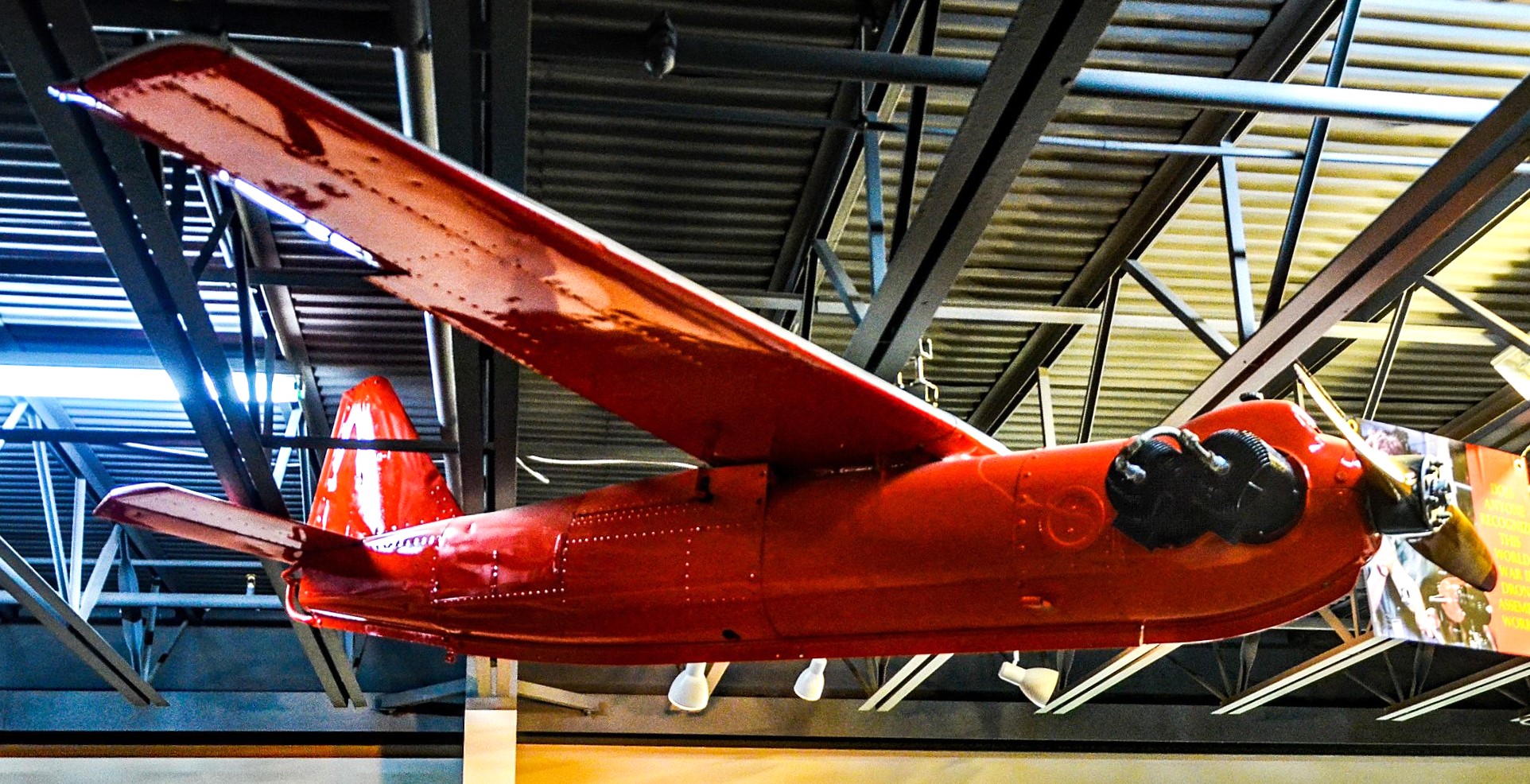Canadian Warplanes 8: Radioplane OQ-19A target drone
Radioplane OQ-19A target drone

(Author Photo)
Radioplane OQ-19A target drone, Jackson Barracks Military Museum, New Orleans, Louisiana.
Ten Radioplane OQ-19A aerial targets were acquired by the RCAF and initially assigned to the Aircraft Armament School at RCAF Station Trenton, Ontario.
(Serial Nos. 20100 to 20109). They went into storage with No. 6 Repair Depot at Trenton on 25 February 1955. They were classified as Class B equipment (training aides) when struck off.

(NMUSAF Photo)
Radioplane OQ-19 target drone, National Museum of the USAF, Dayton, Ohio.
Radioplane OQ-19 target drone was built in response to the USAAF's requirement for fast aerial targets with which to train anti-aircraft gunners, Radioplane (a division of Northrop Aircraft Co.) developed a 200 mph class aircraft in 1945 . Evolved from earlier designs, such as the OQ-2A, the OQ-19 was first flight tested in 1946. It was capable of catapult launches, rotary launches from a circular runway, and air launches from a B-26C. When hit or out of fuel, the target was recovered under a 32-foot diameter parachute. Some OQ-19Ds were fitted integral flotation material to permit water recoveries. Four men were needed to launch this target, whether by catapult or by the rotary method. A fifth man flew the target from the ground or from another aircraft. At a range of 200 yards, the OQ-19 appeared to gunners like a single-engine fighter at 500 yards. Over 10,000 OQ-19s were built for the USAF between 1955-1958. Of the four models, the OQ-19D was the largest and fastest. The OQ-19D on display in the NMUSAF was donated in 1960 by C.E. Manning of Sidney, Ohio, and it was prepared for display by the Naval Air Reserve Detachment in Columbus, Ohio. (NMUSAF)

(Tomas del Coro Photo)
Radioplane OQ-19 target drone, Military Aviation Museum Virginia Beach Airport, Virginia.

(Mts6789)
Original OQ-19 on display at AUVM, Aviation Unmanned Vehicle Museum.
The BTT family began life in the late 1940s, evolving through a series of refinements with the US Army designations of OQ-19A through OQ-19D, and the US Navy name of Quail with designated KD2R. Early models had a metal fuselage and wooden wings, but production standardized on an all-metal aircraft.
The Radioplane OQ-19/KD2R-5, with a 95 horsepower (71 kW) McCullough had a top speed of 230 miles per hour (370 km/h). Some models were equipped with wing-tip mounts for teardrop-shaped radar reflectors that allowed them to be used with various radar-guided guns and missiles. These entered service as the MQM-36 Shelduck, and ultimately became the company's biggest success, with just 60,000 produced in a production run that lasted into the 1980s. A modified version of the Shelduck, the RP-71 Falconer (MQM-57), added an autopilot and camera mounts for battlefield reconnaissance duties. (Wikipedia)





